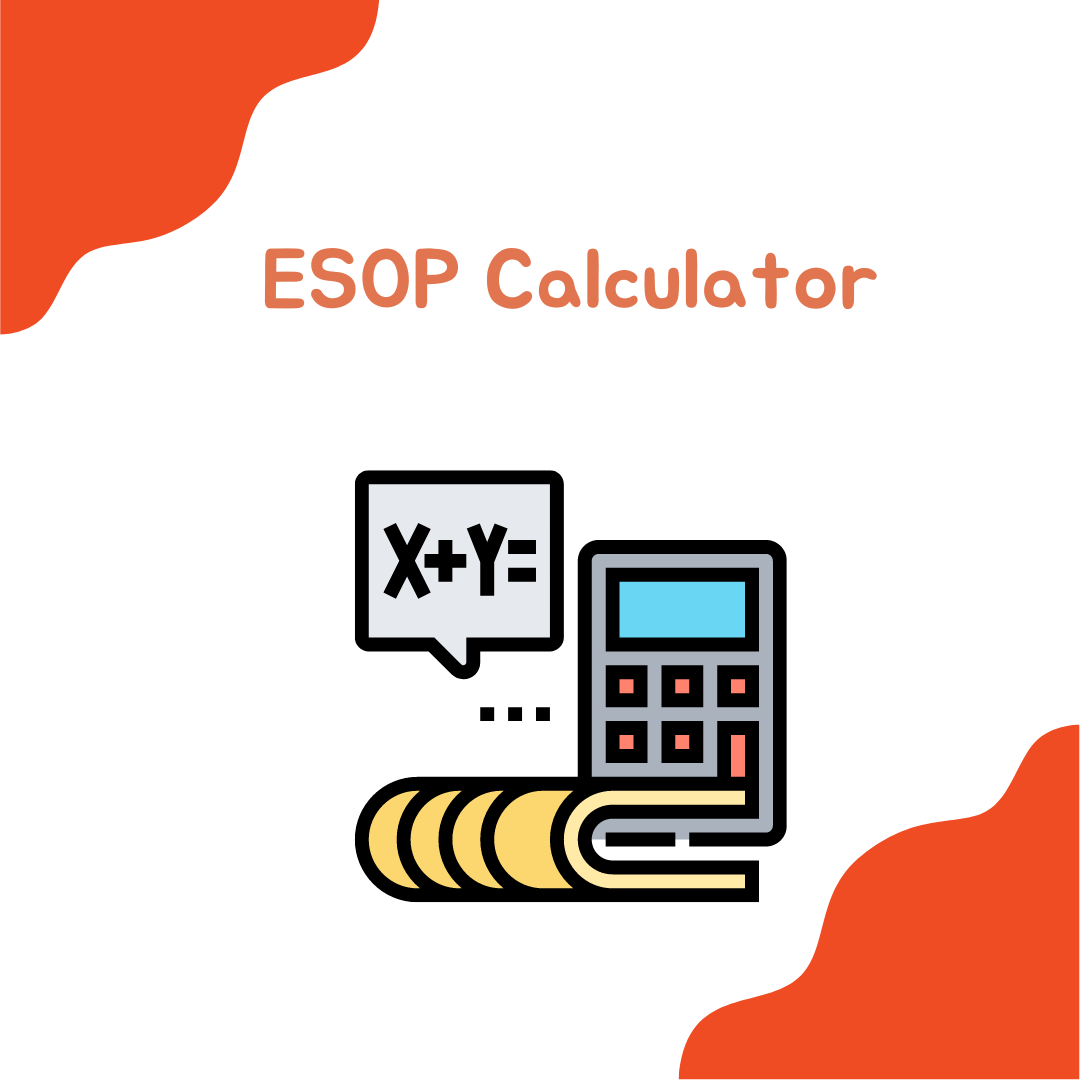ESOP Calculator
Unlocking the Power of ESOP Calculator: Navigating Employee Stock Ownership Plans with Confidence
Employee Stock Ownership Plans (ESOPs) have gained significant popularity in fostering employee ownership and engagement while providing a path to wealth accumulation. As more companies explore this ownership structure, the need for accurate and user-friendly tools becomes paramount. Enter the ESOP Calculator – a powerful instrument that empowers both employers and employees to make informed decisions and maximize the benefits of ESOPs.

Understanding ESOPs: A Brief Overview
Before diving into the specifics of calculator, let’s briefly revisit what ESOPs are. Essentially, employees are allocated shares of the company’s stock over time, either as part of their compensation package or through voluntary contributions. This ownership stake aligns employees’ interests with the company’s success and serves as a retirement savings vehicle.
Your ESOP contribution: $0.00
Formula for Calculating Aircraft Wing Loading
Certainly, here’s a simplified version of the formula for calculating the projected Ownership in calculator. Remember that this is a basic formula and needs to consider more complex factors like dividend reinvestment, taxation, or varying vesting schedules. This formula assumes a constant stock price growth rate.
Let:
- ISA = Initial Stock Allocation (number of shares)
- VP = Vesting Period (in years)
- Growth = Annual Stock Price Growth Rate (decimal)
The formula for Annual Vesting:
Annual Vesting = ISA / VP
The formula for Future Stock Price:
Future Stock Price = Current Stock Price * (1 + Growth)^Years
The formula for Projected Ownership:
Projected Ownership = Vested Shares + Additional Contributions
Where Vested Shares is the cumulative sum of annual vested shares up to that year, and Additional Contributions is any additional shares purchased or contributed by the employee.
The formula for Cumulative Ownership:
Cumulative Ownership = Sum of Projected Ownership for all years
Please note that this formula is simplified and does not account for various real-world complexities and variables. For more accurate and comprehensive calculations, it’s recommended to use specialized calculator software or consult financial experts who can consider all relevant factors.
The Role of ESOP Calculations
ESOPs offer a range of benefits for both employers and employees, such as fostering a sense of ownership, incentivizing performance, and providing a retirement safety net. However, the intricacies of ESOPs, including stock valuation, vesting schedules, and tax implications, can be complex and difficult to grasp. This is where the calculator comes into play.
A Calculator is a digital tool designed to provide employees with insights into how their ESOP ownership will evolve over time. It factors in various variables such as initial stock allocation, vesting periods, stock price changes, and dividend distributions. This enables employees to understand the potential value of their ESOP holdings and make more informed financial decisions.
Key Features and Benefits of ESOP
1. Transparency:
The calculator offer transparency by breaking down complex financial concepts into easily understandable visuals. Employees can see how their ownership stake grows as they stay with the company and as the company’s valuation changes.
2. Customization:
These calculators allow users to input different scenarios, such as changes in stock price, tenure, and contributions. This enables employees to experiment with different scenarios and see how their ownership could be impacted under various conditions.
3. Financial Planning:
The calculator can be powerful financial planning tools. Employees can integrate their projected ESOP earnings into their overall retirement plans, helping them assess whether their current savings strategy aligns with their retirement goals.
4. Informed Decision-Making:
Employees can use the calculator to make informed decisions about their participation in the ESOP. For instance, they can decide whether to increase their voluntary contributions, adjust their vesting schedule, or modify their investment strategy based on the calculator’s projections.
5. Educational Tool:
The calculator provide numerical results and educate users about the fundamental concepts of ESOPs, stock ownership, and retirement planning.
Using an ESOP: Step by Step
1. Gather Information: Collect essential Information such as allocated shares, vesting periods, and projected stock price changes.
2. Access the Calculator: Many companies offer calculators as part of their employee portal or benefits package. If not, there are several online calculators available.
3. Enter Data: Input the gathered Information into the calculator. Some calculators also allow you to adjust variables like future stock price growth rates and dividend distributions.
4. Analyze Results: The calculator will generate projections of your ESOP ownership over time. You’ll see how the value of your ESOP holdings changes as different factors come into play.
5. Experiment with Scenarios: One of the strengths of calculator is the ability to experiment with different scenarios. You can adjust variables to see how changes in stock price or vesting periods impact your ownership.
6. Make Informed Decisions: Armed with the insights from the calculator, you can make more informed decisions about your ESOP participation and its role in your overall financial plan.
ESOPs to promote employee ownership
As companies increasingly embrace ESOPs to promote employee ownership and engagement, ESOP calculator emerge as indispensable tools. These calculators empower employees with insights into their ESOP ownership, fostering transparency, informed decision-making, and effective financial planning. By utilizing a calculator, both employers and employees can maximize the benefits of this ownership structure and work towards a more secure financial future.


